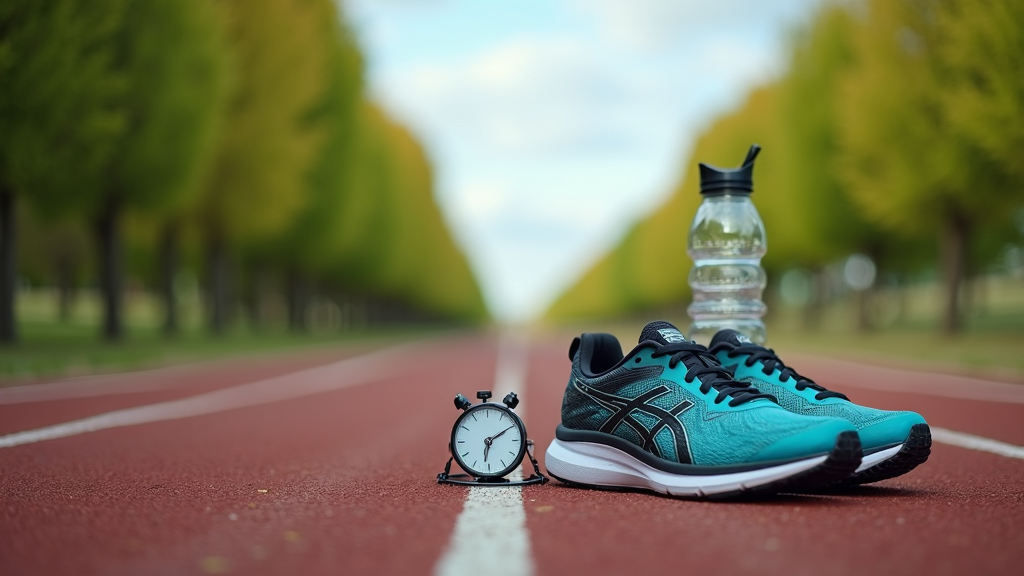Running is a workout nearly anyone can try, making it a seriously practical way to get moving if fat loss is your goal. Whether you’re already lacing up your sneakers in the morning or just considering giving running a shot, there are all sorts of running workouts to help speed up your metabolism and torch calories. In this article, I’m breaking down the best types of running workouts for burning fat, sharing my own experience, and dropping some tips to help you succeed on your fat loss adventure.

Why Running Is a Practical Fat Burning Workout
If you want to drop a few pounds or target stubborn fat, running fits right into your plan. It’s free, requires little gear aside from reliable shoes, and you can get it done just about anywhere. When you run, your body taps into both stored carbs and stored fat, especially as workouts get longer or you turn up the intensity.
Plenty of research, including findings from the American Council on Exercise, shows that running generally burns more calories than most other types of steady cardio. That’s great news if your biggest goal is fat loss. I’ve noticed that by mixing things up—especially by switching running styles—staying interested is much easier, which makes it easier to stick with running for the long haul.
Top Running Workouts That Actually Burn Fat
Not all runs are created equal, especially for fat loss. Here are some of the running workouts I use to keep things fresh and effective:
- SteadyState Running: This is running at a steady, moderate pace for a longer time (think 30–60 minutes). You can lose yourself in the groove and pile up a solid calorie burn. I use steady runs for aerobic base building and to clear my head.
- Interval Training: You switch between hard running (sprints) and easy recovery (walking or light jogging) all in the same session. For example, sprint hard for 30 seconds, then walk for 90; repeat for 20–30 minutes. Intervals are super effective for cranking up calorie burn and tapping into fat stores even after your run is over.
- Tempo Runs: Go at a “comfortably hard” pace (about a 7–8 effort out of 10) for 20 minutes. Tempo runs ratchet up your metabolism and fitness. They’re tough but the feeling after is totally worth it.
- Hill Repeats: Sprint up a hill, then jog or walk down. Hills build leg strength and muscle, so you’ll keep burning calories even at rest.
- Fartlek Runs: Swedish for “speed play.” This is a totally flexible run where you mix up your speed whenever you like. It keeps you mentally sharp and physically challenged.
Experimenting with these types of runs keeps things interesting and helps you see steady improvements, both in fitness and fat loss.
How Running Actually Burns Fat
Your body needs energy to run, and it grabs that energy from different stores depending on how long and how hard you’re going. At lower intensities (think relaxed jog), you’re burning more fat for fuel. At higher intensities (like sprints), your body leans more on stored carbs. The bonus is, when you do intervals or hills, your body ramps up the “afterburn” effect (officially known as excess post-exercise oxygen consumption or EPOC). That means you’ll keep burning extra calories—and fat—even after you stop running and are sitting around at home.
I’ve noticed in my own routine that mixing slow, longer runs with interval training brings out the best fat loss and all-around health gains. Doing the same run over and over gets boring for your mind and your body, and eventually, you’ll notice fewer results. If you switch things up regularly, you keep your metabolism on its toes and avoid hitting those classic plateaus.
Simple Steps to Plan Your Fat-Burning Running Routine
You can’t go wrong if you’re consistent— it’s the best way to get results from running. Here are some steps that help me (and lots of others) stay dialed in:
- Pick a Realistic Schedule: Beginners, start with three runs a week. If you’re more advanced, bump up to five. Find what matches your life and energy.
- Mix Workout Types: Toss in a blend of steady runs, intervals, tempo days, and maybe a session of hills for good measure each week. It helps your body adapt and keeps you interested.
- Set Clear Goals: Want to run a 5K? Drop a set amount of body fat? Or just boost your daily energy? Marking down clear goals keeps your motivation high and helps you track progress over time.
- Prioritize Recovery: Your body takes a beating with regular running, so don’t skimp on rest days or lighter training. It’ll keep injuries at bay and give your muscles time to rebuild—which is great for burning fat.
- Fuel Up (But Don’t Overdo It): Eating smart before and after runs fuels your results without undoing the calories you burn. I focus on lean proteins, veggies, whole grains, and plenty of water.
What To Consider Before Starting Running For Fat Loss
Jumping in too hard and too fast can land you with aches, injuries, and tons of frustration. Here are practical things you’ll want to check off, especially in the beginning:
- Shoes Matter: The line between a good run and knee pain often comes down to the shoes. I go to specialty shops to get fitted by folks who know what they’re doing, and recommend it to friends starting out.
- Start Gradually: Rolling out of bed and running daily rarely ends well for new runners—take it slow. Mixing walking with running (walk/run intervals) works great for building basic endurance safely.
- Check Your Form: Good posture is key: keep your shoulders relaxed, eyes ahead, and swing your arms naturally. Sloppy form leads to annoying aches down the road.
- Track Your Progress: Old-school pen and paper or a jogging app—either works. Being able to see your distance and pace over weeks is motivating and helps you catch trends and progress you’d otherwise miss.
- Listen To Your Body: It’s normal to feel tired or a little sore, but sharp pain is your signal to rest. Most running injuries start as minor annoyances, so don’t ignore them.
Ways To Take Up a Notch: Advanced Fat-Burning Running Strategies
Already comfortable with the basics? A few easy tweaks to your running routine will torch more fat and help you get results faster:
Try Fasted Cardio: Heading out for a run before breakfast, some find, helps burn more fat. Keep the intensity easy—no sprinting on an empty stomach. I like testing this with short, chill runs first and seeing how my body reacts.
Add Crosstraining: Toss in squats, planks, or cycling once or twice a week. You’ll get stronger, improve your running form, and burn even more calories overall.
Focus on Time, Not Just Distance: Try running for a certain amount of time rather than a set distance—especially if your schedule is packed or you’re still new and building up endurance. This flexibility makes sticking to a routine much easier.
Include BacktoBack Run Days: Once you’re used to steady running, try two easy days in a row. Slight muscle fatigue actually encourages your body to burn fat even more efficiently for energy.
Practical Applications: Real-World Fat Burning and Running
I’ve watched friends and other people transform both their health and waistlines by sticking with running routines for just a few months. The change isn’t only on the scale. Running brings a confidence boost, gives you daily wins, and helps your mood thanks to those happy endorphins. A common plan: a longer weekend run, spiced up with two interval sessions during the week. This mix burns fat while keeping you energized and on the path for the long term.
- Weight Loss: Focus on moderate, steady runs with a side of weekly intervals.
- Mental Health: Running doubles as cheap (even free) therapy—plus you get some outdoor time in the sun. (or moonlight if you are more of a night person)
- Community: Run clubs, races, and online challenges keep you motivated and connected to people with your same goals.
Another thing you could try is something that, I also personally use, will help you reduce the amount of time it will take for you to see results. Of course it will still require you to stay devoted to your plan, since there is no cheat code for this. You have probably already heard about them in the past. But it is possible you still don’t know how effective they are or how helpful to our body’s metabolism.
If you want to achieve your goals faster, it is definitely worth giving it a shot. You can find more about it through the link below :
The Solution To Effective Weight Loss
Common Questions About Running Workouts and Fat Loss
Here are answers to questions that usually pop up once you’re thinking about running for fat loss:
Can running workouts help you lose weight?
Definitely. Running is one of the most efficient activities for creating a calorie deficit, which you need for weight loss. Do it regularly, pair it with smart eating, and the results follow.
Is running good for fat loss?
Absolutely. Running uses a ton of energy and ramps up your metabolism. Intervals in particular are legendary for fat burning, mainly because of their afterburn effects.
Does running burn fat?
Yes. Your body burns both calories and fat on every run. Over time, your body actually becomes better at using stored fat as fuel, especially at slower speeds and longer distances.
How can I lose weight if I run for weight loss?
It’s all about consistency, mixing up your runs, sensible eating, and never neglecting recovery or sleep. Results might not be lightning fast, but stay committed and things will start moving in the right direction.
Fat Burning Running Workouts: Wrapping Up
Running is a solid strategy for anyone aiming to burn fat, lose weight, or simply get fitter overall. Mixing up intervals, long runs, hills, and tempo sessions keeps things interesting and helps drive results. Good shoes, a plan that fits your schedule, and regularly tracking your progress are essential. From my own experience—and what plenty of research backs up—the trick isn’t chasing instant results, but instead building a routine you can keep up for months and even years. The payoff? A slimmer waist, more energy, better health, and a feeling of accomplishment that’s tough to beat.
**Here’s a little transparency: Our website contains affiliate links. This means if you click and make a purchase, we may receive a small commission. Don’t worry, there’s no extra cost to you. It’s just a simple way you can support our mission of helping you find out all the incredible benefits this hobby has to offer.**

Leave a Reply